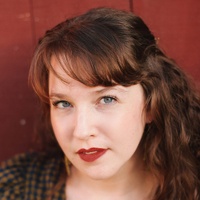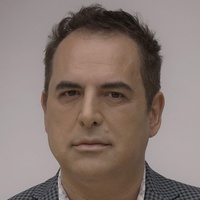On creative work as therapeutic release
Prelude
Zeynab Izadyar is a Brooklyn-based designer and the founder and owner of VVORK VVORK VVORK. VVORK VVORK VVORK started in 2017, with its custom collection of one-of-a-kind items that are made with a combination of carefully collected materials, hand-dyed and marbled fabrics, and unorthodox hand-embroidered details. VVORK VVORK VVORK uses a language of visual poetry created by different medias drawing from words and written sounds (in Persian, English, and Arabic). Most pieces have a unique title that carries the surreal story of the moment the scenery was crystallized.
Conversation
On creative work as therapeutic release
Designer Zeynab Izadyar on identity and work, being prolific, layering textures and meanings, the performative narrative of clothed bodies, and therapy.
As told to Rona Akbari, 2462 words.
Tags: Design, Art, Culture, Identity, Education, Process, Inspiration, Beginnings, Mental health.
Tell me about your work background—how you got into design, your experiences at Yale, and how you got into making clothes.
When I was 20 or 21 years old, a long time ago, I decided to get a job in a commercial design studio. I was still a graphic design student [at Tehran University] and I was poor. I went to a commercial studio, it was a tiny one, and I worked there for one month. They were happy to have me at the beginning, but after a month they sat me down and basically, very softly, fired me. They said, “Oh, Zeynab, it’s very nice to have you here, but you didn’t bring any money to the company. So, starting this month, we cannot pay you the amount we discussed” and they offered something that wouldn’t even cover my commute.
So my first attempt in separating the two worlds of design in my life, one that I liked and one that was going to feed me, failed dramatically. Right at that moment I was lucky to be offered to work somewhere that I liked but it didn’t really pay me, I happily accepted and stayed the same poor student and that became my path.
It was when I moved to the US, after finishing my Graphic Design MFA at Yale—which, by the way, I am still recovering from the toxic experience there—that I actually had to deal with it again. It is slow, but it is therapeutic. And I think through this process, very organically, I started making clothes. Actually I was always making clothes. It was a part of me that was there but I never considered it as a practice.
So it was more of a therapeutic process for you rather than, “I’m going to turn this into something.”
Yes, I think I was resistant toward it at first. Maybe it was the education I got that stopped me, also part of it was the stigma that I had toward the material itself and my gender—I didn’t see it as something that I do or I want to do because I grew up with the major assumption that fabric is that domestic material that women deal with. Even now in the art world, I think there are still talks about domesticity and femininity, and fabric is number one on the list. It took me a little bit to find strength even in that read, and I realized my stigma is not only toward the material but deep down is toward the gender.
Now I love working with it. The material itself is very much connected, like cooking. It’s a very direct extension of our body, and if it still registers with a specific gender, so be it, that is my strength. But I think the stigma was so embedded in me that I didn’t want to use materials that are going to frame me as “another” woman just using fabric, the material “they” are comfortable with. So I had to choose it again. I was always making clothes for myself, and sometimes for my friends because I couldn’t resist doing it—because I hated everything else that I would see and I needed to wear something, or I couldn’t afford the thing that I wanted.
After moving to the US, right at the beginning At Yale, I very quickly realized that there is an assumption that, as an “Iranian woman,” I am being “saved here.” One day that the news about Iran was on the first page again—Obama had put new sanctions on Iran—I walked into the school, minding my own business, going to be a graphic design MFA student and make my own boring project and try not to be this politicized Iranian woman. On my way, I was stopped by an an unwanted and uncomfortable hug out of nowhere from a teacher, and she said, “I’m so sorry. As an American, I’m so sorry about what’s happening right now with Iran.” It was horrible. I had many bad days there, but this one was one of the first ones and had a strong impact on my way of being there. The thought of “Oh, shit. I’m the token for this lady and she thinks that she’s saving me.” That was the day that my relationship with her and that academia changed for me. I refused all her attention because it was the wrong kind of attention.
I started resisting my femininity and Iranianness and tried very hard to be a human being and make work as a human. I was fighting it so much that I lost my creative freedom. I still don’t have a lot of good answers about why I feel more comfortable about it now, but being far away from a toxic academic environment might be on the top of the list. I think it was a moment of feeling comfortable with myself in general that I could let go of the stigma around the material and around this exotic Iranian woman that needs to make work. I hated whenever they would say, “Your work is so beautiful and poetic,” I would be like, “Shut up. Don’t bring poetry to my work.”
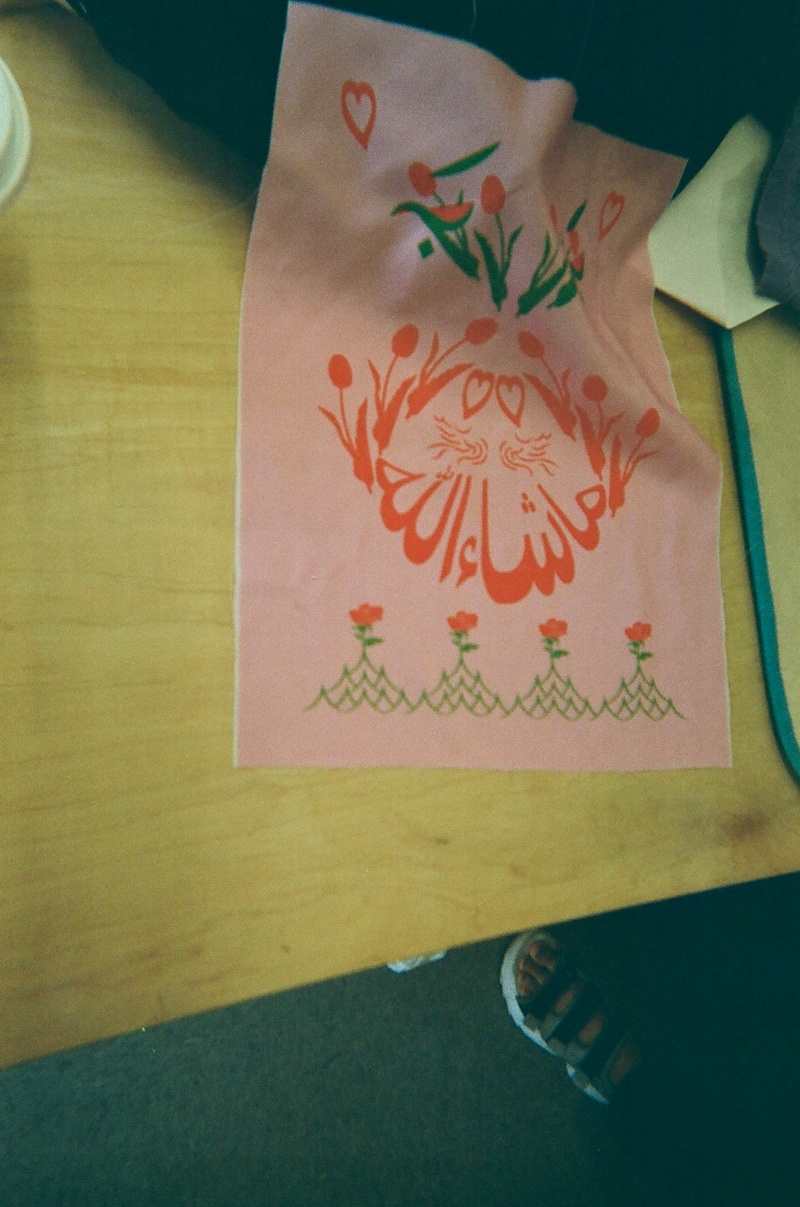
A design Zeynab created
Why did that turn you off?
Because what it meant was, “Oh, I don’t understand your work, but I respect your culture.”
It doesn’t become about your work, it becomes about this other thing.
Honestly, you feel like a statue and someone is telling you, “Oh, you look beautiful,” and that’s it, no further conversation. You know what I mean? I never got any constructive feedback.
A friend once told me that you can’t analyze and create at the same time. You have to create the thing first and then think about it, reflect it, analyze it, even criticize it later. I was wondering what your take on that is.
I totally agree. it’s hard to create if you try to explain it all in theory first. It kills your creativity. It’s healthy to somehow let yourself stay in the dark. Nothing happens through sitting down and just trying to analyze and figure it out without moving and actually doing it. I say this because I used to plan and analyze way before letting an idea form through making it, and maybe that’s why I couldn’t make or create. I would over draw it in my head and I would lose interest or it would lose its momentum. If you touch an idea too much without actually making it, just like a dough or plaster, it dies. I think it’s better to make and bake it and throw it away than to imagine how it would have worked or tasted.
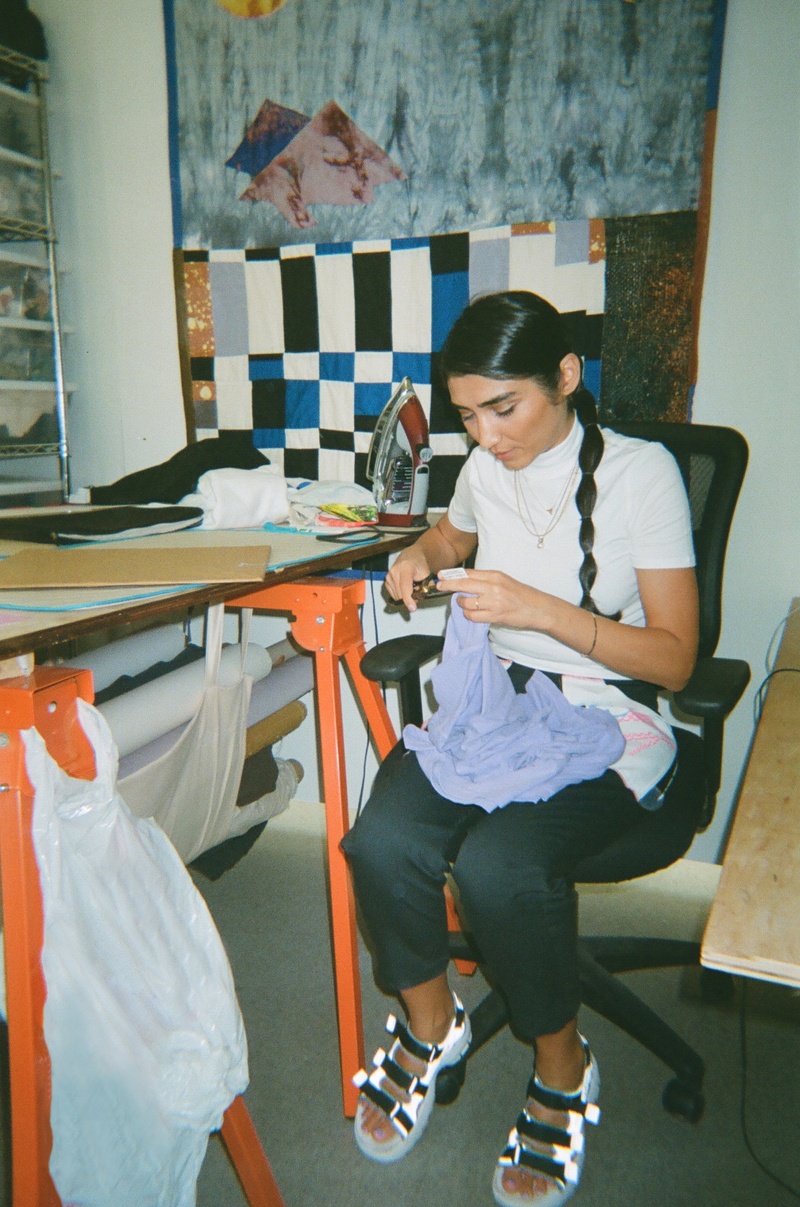
Zeynab in her Williamsburg studio
That part about theory—is your work informed by theory?
My work is very personal and it’s a lot about the reality of my being. I think it gives too much in some instances and in some it withholds information, too. As I got closer to myself and more comfortable with myself, I got more comfortable about working with what connects with me. Surprisingly, this honesty connected with some people very well— obviously not everybody, but it’s not supposed to. Nothing is supposed to connect with everybody.
What do you mean?
For me, maybe the thinking part had to happen years ago, in another medium, not in the one I chose to create with. Maybe through my conversations that are not necessarily about art, but rather about who I am. I don’t want to say something like, “Finding myself.” It’s not finding myself. I think it’s a combination of my academic background and the experience in the graphic design industry for a long time mixed with the techniques that I learned from my mom and dad.
I learned knitting, marbling, calligraphy, and clay work from my dad, and sewing and cooking and playing with natural dyes in cooking from both of them.
Wow. What kind of dyes?
Different natural dyes like turmeric, saffron, chives, beats, onion, madder, and many more. We would dye eggs for New Year’s, with madder and onion peel. My mom would decorate the rice with saffron for orange and yellow, beets to get red, chives to get green, and red cabbage to get blue. Decoration in Persian cuisine is tightly connected to drawing and typography. They draw on the rice with the natural dyed rice. Mast-o khiar, a yogurt side dish, usually would be decorated with powdered dried mint and dried rose. Another interesting one is sholeh zard with all the cinnamon powder typography on it of “Ya Ali, Ya Hussein.”
Food is really prominent in your designs. In our culture there’s no escaping it, really.
What better way to connect? Clothing and food are very directly an extension of our body, one that goes inside and one that covers the outside. Love is food.
I still can’t really completely analyze [the designs], and I think I shouldn’t. When I’m able to fully decode what I’m doing, then I don’t do it anymore. I think this process of finding it out is important to the creative process.
In one of my trips to Iran, I saw all these rice bags that my mom had collected, nicely folded in her kitchen drawer. She didn’t have any use for them, she was just collecting them because she doesn’t throw away much. I had become Western enough to objectify them and be like, “This is so fucking beautiful. I want them all.” I brought them here with me. And I love it that my first motivation for starting VVORK VVORK VVORK literally came out of my mom’s kitchen, and not just “my heritage.”
I find it very interesting that she was storing it in her kitchen and this semi-Western me found it again. History repeats. I had these rice bags here in New York for over two years in my drawer. I didn’t do anything with them. I just had them. One day, I was given a sweatshirt that had a very bad typography of Brooklyn printed on it. The word Brooklyn was hyphenated as “Brook-Lyn,” in two lines. I wanted to use it but couldn’t wear that ugly thing. So, to cover that up, I sewed one of the beautiful rice bags on it, and that was the start.
But it didn’t stop there. I sewed the rice bag and I started layering, hiding and revealing the text and the image with obsessive embroidery details on it. Then I added some of my hand-dyed fabrics, and then I added more words, my words on it, and slowly, I myself started to connect with it, with the aesthetic, the visual, and the words.
Even now, I think I do the same. Somehow the first collection leaned toward landscape. There should be a very good explanation in psychology about the landscape and body being this mobile thing that carries words and narrative. I think it’s a performative part of the narrative that gets carried on through the body. So, it made sense to put it on the body. Body takes the narrative of taste, aroma, sound, visual, words, an language and brings it to performance.
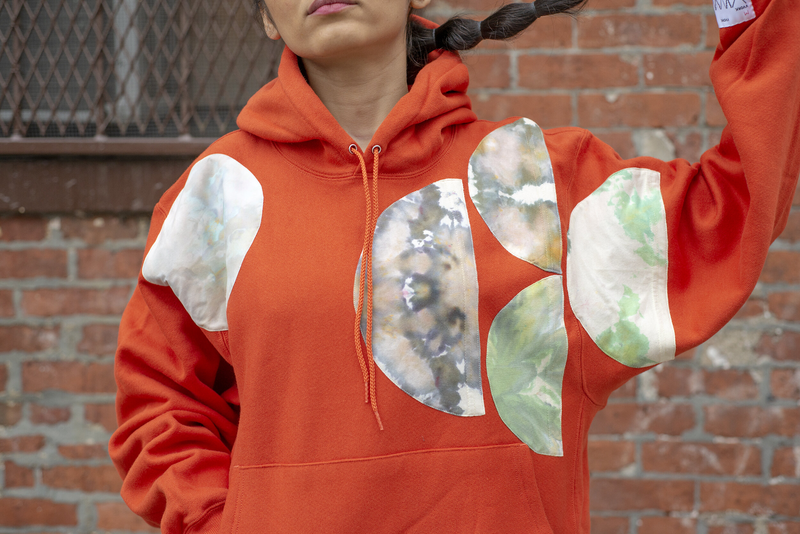
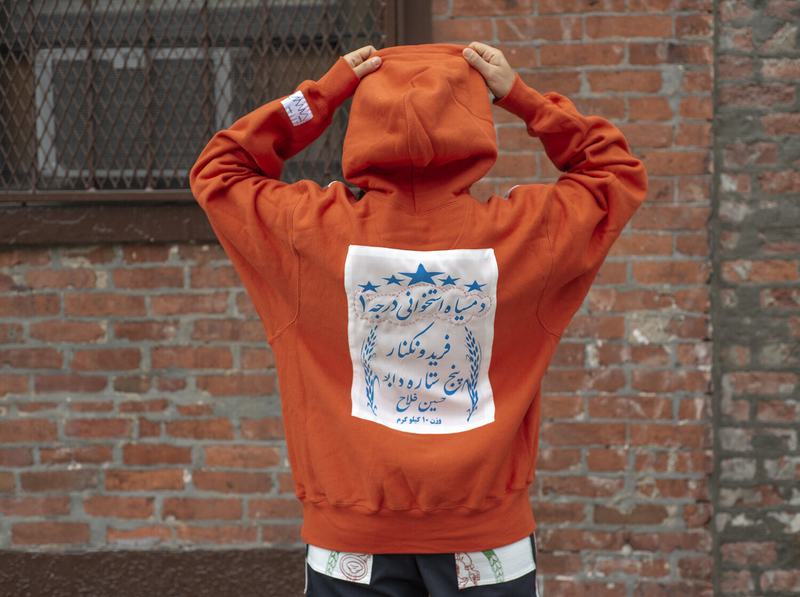
Moon Phases And Faces - Reverse weave cotton hoodie, made with a combination of collected rice bags, hand dyed fabrics and detailed embroideries
What advice would you give young designers?
I think everybody has their own way. There is no one way and no advice would work for everybody. But one thing that I’m sure will not bring harm to anybody’s creative process is to work a lot, make a lot. You will not know what you’re doing unless you make it many times. Just make, make, make. Work, work, work. But try not to add to the trash in the world.
Earlier in the conversation, you said it wasn’t until you started being really comfortable with yourself that you were able to do your work. How do you become comfortable with yourself? What builds confidence in that way for you?
Well, If you’re not already in touch with yourself, I think one not-so-fun way is to get very low first to be able to then become very comfortable with yourself. I hit a point where I was just very depressed. I think a lot of people are. Depression is still something that we don’t talk about, but is the main brake that takes over our life and stops us from making any room for doing anything. To be honest, I think every single person needs to see a therapist. In my case, I have found this process of layering and removing the materials I use very relatable to how our psyche was shaped.
There are just so many layers, that if I mess something up, I’ll put another mountain on it. As long as the construction is okay and it’s not going to fall apart, and maybe I will put an ouch on it to remember. It’s there, and not many people know what’s under that, and I may forget what’s under that, too. That’s exactly how I, myself, had to remove some layers to see what was underneath.
Would you say your designs are less of a collaborative process?
Definitely, and I would like it to stay that way. No, I’m joking. I want to collaborate, but I haven’t found the right means yet.
Sometimes working alone can be a meditative or very personal process. Do you see it that way, too?
Yes. I don’t want all my work to be collaborative. I need most of the creative process to happen in my alone time. But I have started meeting other artists through my work, and I feel very close to their work, and we’re connecting through social media. I talked with one recently who lives in another continent, and although our work is different visually, we come from a similar layer of interest. For instance, she brought up therapy and how her practice has been therapeutic for her. So, I hope I can collaborate with individuals like her.
[Photos in this story by the interviewer, Rona Akbari]
Zeynab Izadyar recommends:
throat singing
macro photography
everything with saffron, rosewater, and cardamom
- Name
- Zeynab Izadyar
- Vocation
- Designer
Some Things
Pagination
